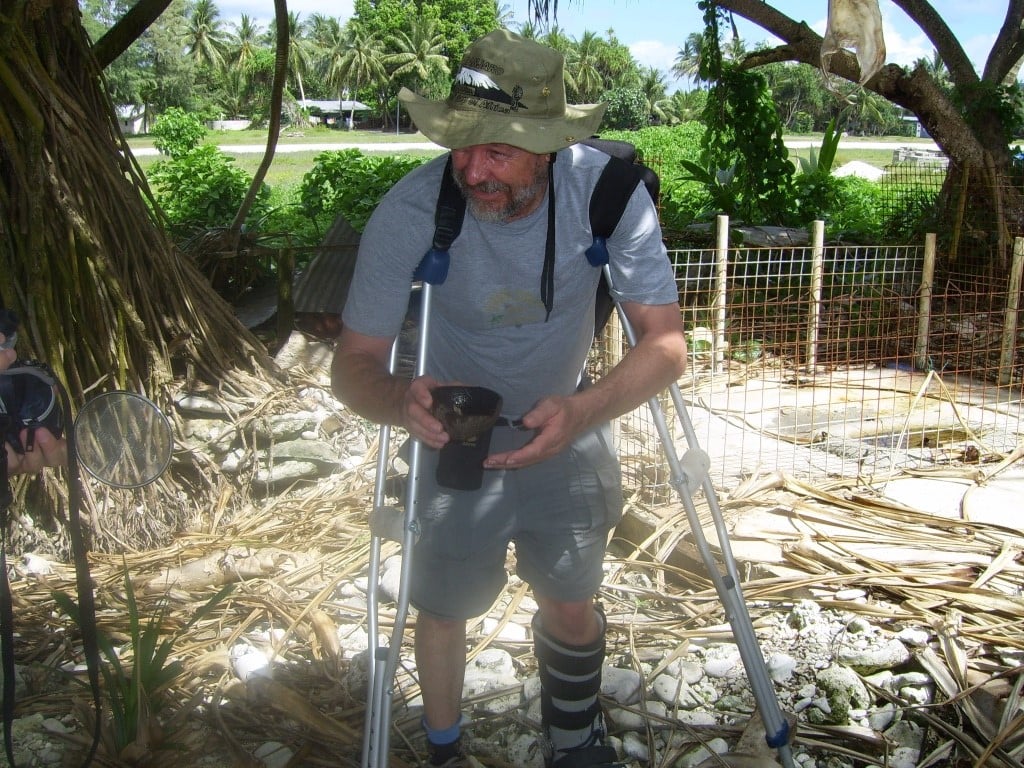Control of Communicable Diseases in Human and in Animal Populations: 70th Anniversary Year of the Birth of Professor Rick Speare (2 August 1947 – 5 June 2016)
A special issue of Tropical Medicine and Infectious Disease (ISSN 2414-6366). This special issue belongs to the section "Vector-Borne Diseases".
Deadline for manuscript submissions: closed (30 April 2018) | Viewed by 128459
Special Issue Editor
Interests: public health; tropical neglected diseases; epidemiology
Special Issues, Collections and Topics in MDPI journals
Special Issue Information
Dear Colleagues,

In Memoriam Rick Speare (1947--2016)
In the 1980s, he worked as a research fellow in Veterinary Science on diseases of amphibians. In the 1990s, Rick was transferred to the Anton Breinl Institute for Tropical Health and Medicine (and later became Director of the Institute and Deputy Head of the School of Public Health, Tropical Medicine and Rehabilitation Sciences at JCU). There he also performed high level research of human medical interest, such as epidemiology and control of head lice infestations—an important issue in times of increasing louse resistance to many pediculicides. He dedicated much of his work to Aboriginal communities, merging animal and human health, such as in the control of sarcoptic mange in dogs. Rick and his team discovered that a chytrid fungus caused the killing of frogs and amphibian mass extinction, one of the current most striking biological problems affecting biodiversity worldwide. His field work with crutches in Tuvalu (after rupture of the Achilles tendon) and the autoinfection with hookworms and production of striking images of hookworms feeding in his intestine (after swallowing a micro-camera) will always be remembered. After retirement, he established ”Tropical Health Solutions“ to work on pandemic threats, and to improve health in the tropics through research and training, mainly in Papua New Guinea and Pacific Islands. On 5 June 2016, Rick was killed in a car crash while driving to a seminar at JCU. Rick will always be remembered as an extremely competent professional, and a man of great humanity with a great sense of humor.
Dr. Jorg Heukelbach
Guest Editor
Manuscript Submission Information
Manuscripts should be submitted online at www.mdpi.com by registering and logging in to this website. Once you are registered, click here to go to the submission form. Manuscripts can be submitted until the deadline. All submissions that pass pre-check are peer-reviewed. Accepted papers will be published continuously in the journal (as soon as accepted) and will be listed together on the special issue website. Research articles, review articles as well as short communications are invited. For planned papers, a title and short abstract (about 100 words) can be sent to the Editorial Office for announcement on this website.
Submitted manuscripts should not have been published previously, nor be under consideration for publication elsewhere (except conference proceedings papers). All manuscripts are thoroughly refereed through a single-blind peer-review process. A guide for authors and other relevant information for submission of manuscripts is available on the Instructions for Authors page. Tropical Medicine and Infectious Disease is an international peer-reviewed open access monthly journal published by MDPI.
Please visit the Instructions for Authors page before submitting a manuscript. The Article Processing Charge (APC) for publication in this open access journal is 2700 CHF (Swiss Francs). Submitted papers should be well formatted and use good English. Authors may use MDPI's English editing service prior to publication or during author revisions.
Benefits of Publishing in a Special Issue
- Ease of navigation: Grouping papers by topic helps scholars navigate broad scope journals more efficiently.
- Greater discoverability: Special Issues support the reach and impact of scientific research. Articles in Special Issues are more discoverable and cited more frequently.
- Expansion of research network: Special Issues facilitate connections among authors, fostering scientific collaborations.
- External promotion: Articles in Special Issues are often promoted through the journal's social media, increasing their visibility.
- e-Book format: Special Issues with more than 10 articles can be published as dedicated e-books, ensuring wide and rapid dissemination.
Further information on MDPI's Special Issue polices can be found here.







